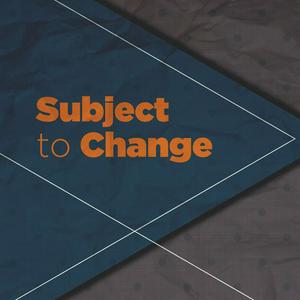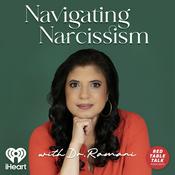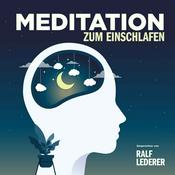100 Episoden

World War I: The surprising victory of 1918
05.1.2026 | 1 Std. 8 Min.
Today the thing we find mysterious is why WWI lasted as long as it did. Why continue a pointless slaughter. Comparisions with the war in Ukraine suggest an answer!My guess is is Professor David Stevenson and for him the mystery is not why it lasted so long but why it ended when it did.For the German public is was particularly mysterious. Just a few months before the Armistice Germany was all conquering. Russia had been driven out of the war on terms hugely favourable to Germany. And in the West her storm troopers seemed poised to deliver victory on this front too.And while the tide had clearly turned the German army was falling back in good order. So what compelled Germany to submit to allied terms? Was it a stab in the back as many Germany came to believe, or something else?David is brilliant at unpicking all of this. As for the answer to the riddle - well, one place to look is in Bulgaria . . If you enjoy this episode, follow the show, share with a friend, and leave a review to help others discover it.

Ed West on 1066 and all that
14.12.2025 | 54 Min.
Ed West is a journalist and massively popular substacker - do check out his substack The Wrong Side of History. But he has a sideline in history so I got him on the show to talk about 1066 and the battle of Hastings. Ed is on top form so please join us as he talks about:- why Harold should have listened to his Mum- Harald Hadrada's absolute last poem- what made the Norman's so very hard to beat- and why the Normans were the woke progressives of their day!If you enjoy the conversation then please follow, share with a history‑minded friend and leave a quick review to help others find the show!

Edward I - a Great and Terrible King
24.11.2025 | 1 Std. 6 Min.
A six-foot-two prince who loved tournaments, outfoxed a revolution, and nearly died on crusade returns to build castles that still dominate the Welsh coast and to bend Scotland to his will until Robert the Bruce strikes back. We follow Edward I’s path from a devoted crusader to the architect of a more centralised, harder-edged medieval state, where finance, logistics, and image mattered as much as swords. Along the way, we discuss the political craft behind his parliaments, the Italian bankers who kept his campaigns moving, and the trade-offs needed to fund his empire.We don’t shy away from the darkness. The 1290 expulsion of England’s Jews reveals the brutal alignment of prejudice and power. So does the battlefield assassination of Simon de Montfort at Evesham and the legal sleight that turned Scottish arbitration into overlordship. For all that Edward comes across as very human. His marriage with Eleanor of Castile was unusually close for the age, marked by shared journeys, many children, and the Eleanor Crosses erected on her death. If Wales became Edward’s lasting triumph in stone and statute, Scotland proved a different matter. It was larger, more resilient, and capable of rebirth under Bruce. And on the continent, a friendly France turns hostile, tricking the king into surrendering Gascony leading to a war England can barely support.Edward does indeed emerge a ruler both great and terrible: a master of war and administration who built a stronger English polity while leaving scars at home and abroad. If you care about medieval power - crusader ideology versus realpolitik, taxes versus consent this episode will sharpen your view of how states harden and why reputations endure. If this episode resonates, follow the show, leave a review, and share it with a history-loving friend.

Empress Wu Zetian and the Age of Female Rule
29.10.2025 | 1 Std. 15 Min.
“With the heart of a serpent and the nature of a wolf, she gathered sycophants to her cause and brought destruction to the just. She slew her sister, butchered her brothers, killed her prince, and poisoned her mother. She is hated by men and gods alike.”Jonathan Clements came back on to talk about his book on Wu Zetian (623–705), the only woman ever to rule China in her own name. Rising from lowly concubine/chambermaid to God-Emperor, she outmanoeuvred courtiers, generals, monks and poets alike - sometimes with charm, sometimes with a knife - and ruled over the empire at the height of the Silk Road.Jonathan describes Wu’s ascent through the Tang court: a place of whispered plots, divine omens, and women struggling to survive. Along the way we encounter girls on top, a boob-shaped tomb, a harem of 120 pretty boys, dogs on sticks, a honey-trap gone wrong, and an inadvisable attempt to train a cat not to eat a parrot.A story of power, paranoia, and the perilous art of surviving your own success.If you find this journey into Tang politics, gender, and myth entertaining and informative then follow the show, share with a friend, and leave a review telling people what bit you liked best.

Napoleon III Part 2: The Power of Lust
06.10.2025 | 1 Std. 3 Min.
As promised in part 1 we started the podcast by talking about some of Napoleon III’s many mistresses. Women like Harriet Howard, the Brighton bootmaker’s daughter, Virginia de Castiglione, sent by the Italians to seduce and spy on him (and welcomed with open arms!), Marguerite Bellanger and Louise de Mercy-Argenteau. His wife hated his infidelities but at least in the case of Louise she took comfort that she was a proper aristocrat!Moving on from the scandalous we talked about Napoleon III’s solid achievements. Not least his success in the Crimean War which led to an alliance with the British and bringing France in from the diplomatic cold. And domestically the economy thrived and Paris was rebuilt.The great tragedy of Napoleon III’s reign was that he was up against Bismark. Suffering from various illnesses (bladder stones in particular) his judgement was possibly affected. And Bismark tricks him into declaring war - with predictable results. His son survived him and oddly ended up fighting with the British Army in South Africa. If you don’t know the story this alone makes the podcast more than worth the time.If you enjoy this podcast on France’s second Empire - its scandals, triumphs, and collapses - then please follow Subject to Change, share it with a friend who loves history, and leave a review telling me what struck you most.
Weitere Bildung Podcasts
Trending Bildung Podcasts
Über Subject to Change
Höre Subject to Change, Gehirn gehört - Prof. Dr. Volker Busch und viele andere Podcasts aus aller Welt mit der radio.at-App

Hol dir die kostenlose radio.at App
- Sender und Podcasts favorisieren
- Streamen via Wifi oder Bluetooth
- Unterstützt Carplay & Android Auto
- viele weitere App Funktionen
Hol dir die kostenlose radio.at App
- Sender und Podcasts favorisieren
- Streamen via Wifi oder Bluetooth
- Unterstützt Carplay & Android Auto
- viele weitere App Funktionen


Subject to Change
App laden,
loshören.





































